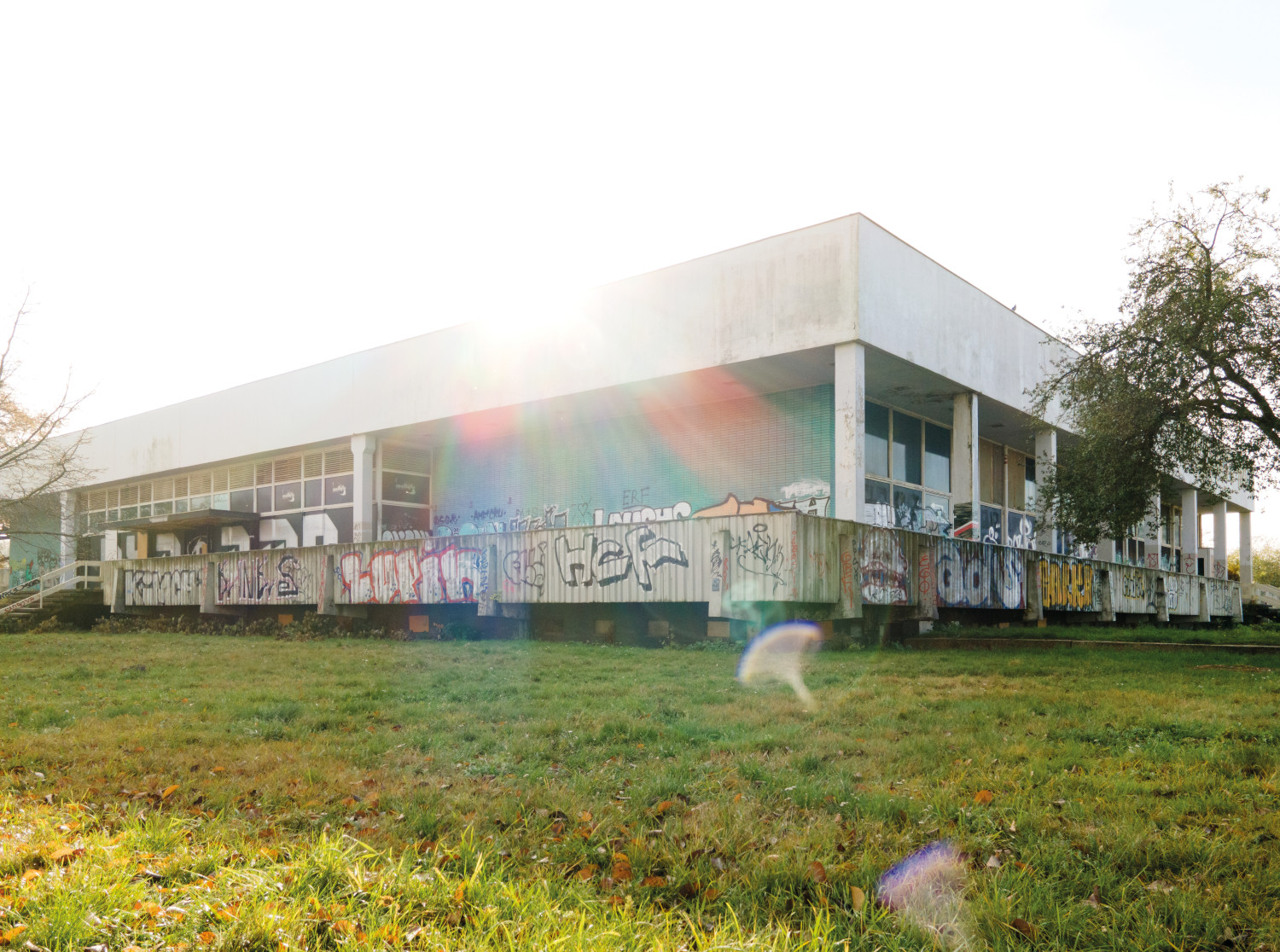
The „robotron-Kantine“ must become a space for new art!
1. Why?
Dresden, the city of art and museums, the cultural and scientific metropolis that is the Saxon capital has a very good infrastructure of institutions. The State Art Collections (Staatlichen Kunstsammlungen Dresden, SKD), the museums of the City of Dresden, the Technical University (TU), the University of Applied Sciences (Hochschule für Technik und Wirtschaft, HTW), the community of TU and non-university research and cultural institutions, bound together in the "DRESDEN concept" alliance, and, last but not least, the three important art academies – all this promises internationality, excellence and innovation. What Dresden still lacks, however, is a place for the new in art: a Kunsthalle. A house in which all those initiatives and institutions that are dedicated to the promotion, presentation and mediation of contemporary art can make an appearance. Not a new, fixed institution with a large staff and a large budget, not a representative new building that has to be lavishly maintained, but a fluid, transitory venue in which, with which and for which artists can work and show their works, financed through public and private funding and a basic budget limited to the most necessary.
2. Where?
The robotron-Kantine is exactly such a place! With all the traces and injuries of time visible, as a relic of failed socialist hopes for technological and social advancement. Today, it is open from all directions to artistic interventions – both in the inside and on the outside. In such a central location of the city, between a park and the old town, in a residential quarter that is just being developed, contemporary art as a platform of social discourse can make its presence known in always new, always different ways. Close to the German Hygiene Museum, where social issues are explored in the light of science, it enters into dialogue with the public with its own points of view. In this way, the former canteen becomes a new, defining place of the artistic and cultural topography of the city.
3. For whom?
For the city community and visitors from Germany and abroad, students, teachers and researchers in Dresden – for all those, who see contemporary art as an opportunity to gain new insights into life and the world in a creative and critical, sensual and intellectual way, with aesthetic sensitivity or unbiased joy. For those who are already part of the art-loving public and those who are yet to be. If it succeeds in giving the place the desired attraction with cleverly conceived offers, the robotron-Kantine will very quickly establish its reputation as an authentic testimony to a bygone but not yet finished era. The sort of ground tone that this genius loci sets for everything that will take place here, will remain an exciting challenge for all those who curate, stage, perform or project their works here.
4. With who?
Such an open house nevertheless needs a backbone – also through having a distinctive profile in terms of content. The OSTRALE will provide exactly that. In a two-year rhythm, the OSTRALE will take over the entire house and will finally be able to develop into what it always aspired to be, but could not due to limitations of space: an internationally oriented and internationally recognized Biennale that takes part in and contributes to universal art discourses. Dresden and Saxony have the capacity to fill the house with events and exhibitions in the remaining three quarters of the two-year cycles. Above all, through the Kunsthaus Dresden, which has long expressed its interest in the building and has already done projects in and around it, and which shall be an equal partner to the OSTRALE. Moreover, when it comes to the production and presentation of art, opportunities in the city are becoming increasingly scarce! There are hardly any affordable artist studios left and gentrification has already wiped out quite a few independent off-spaces. This is one of the reasons why many alumni of the Dresden Arts Academy leave the city after graduation and go to Leipzig, Berlin or even further away. A center for the new arts that is also strongly committed to the regional scene is thus vital for the artistic and cultural climate of the city. Dresden does a lot for the new in research and science. When it comes to art and culture however, there are no direct cost-benefit calculations. Nevertheless, the benefits of the new are obvious, and not only when the old is walking around on the streets.
5. When?
As soon as possible. Without delay. The new residential quarter, where the canteen stands, will be home to rental apartments, including socially subsidized ones. Right in the center of the city. This will bring the canteen even closer to people's everyday lives. For some of them, it will perhaps also be a reason to move here in particular. Once the art canteen has been carefully renovated and its content well-established, it will become clear that everyone – the citizens, the artists, the art and the investors – can only be winners in this story.
Why wait any longer?
The advisory board
Prof. Matthias Flügge, Art Academy Dresden (Hochschule für Bildende Künste)
Prof. Dr.-Ing. E. h. Peter Kulka, freelance architect, Dresden
Prof. Christian Macketanz, Art Academy Dresden (Hochschule für Bildende Künste)
Sybille Nütt, Kunstvermittlung (Art Education) Dresden
Dr. Gisbert Porstmann, Director of the Museums of the City of Dresden
Detlef Schweiger, Künstlerbund (Artists' Union) Dresden
OSTRALE – Center for Contemporary Art
Rethelstraße 45 · 01139 Dresden
Telephone: +49 (0)351 6533763
E-Mail: post@ostrale.de
www.ostrale.de
(Photo © Blaurock Markenkommunikation)
